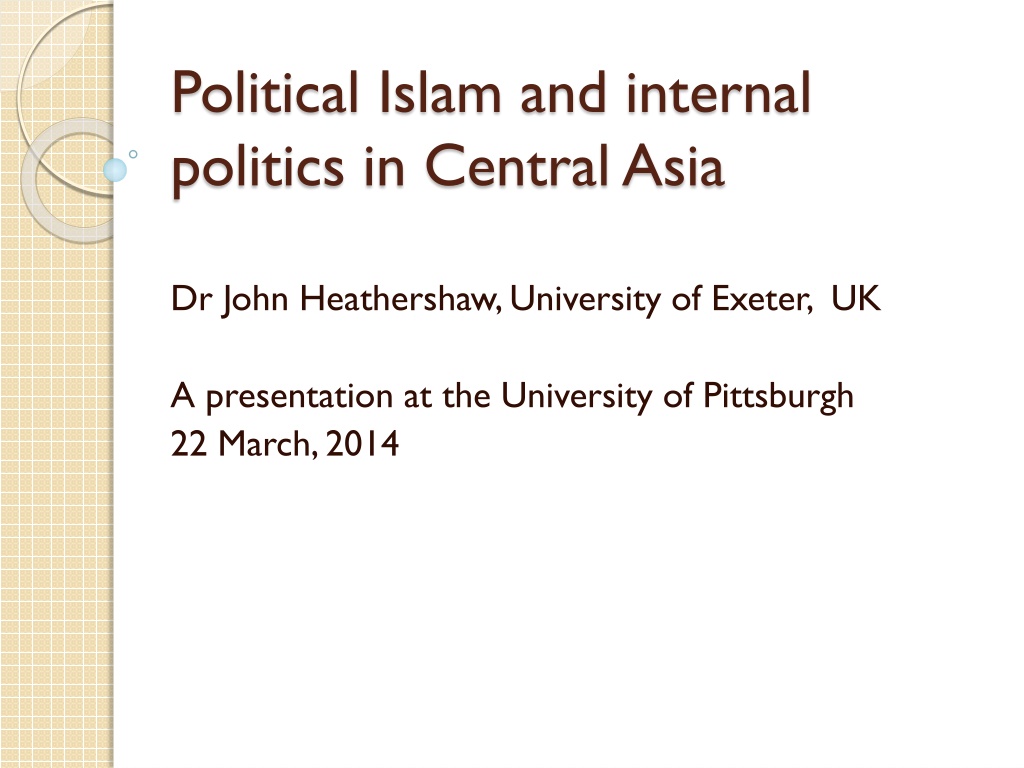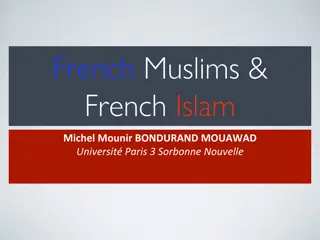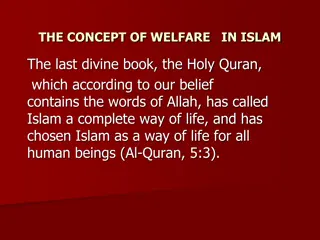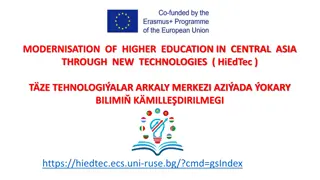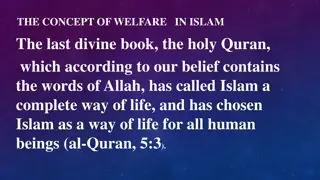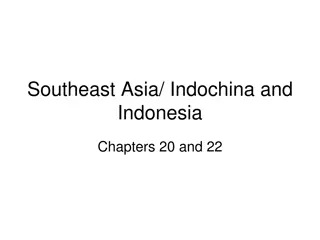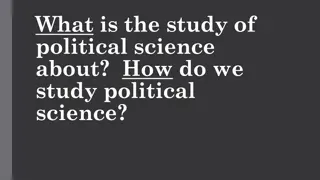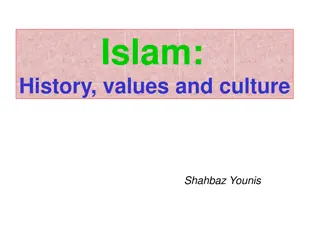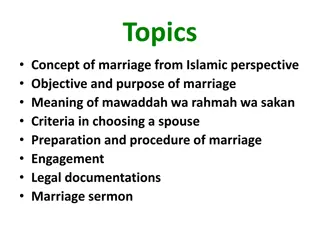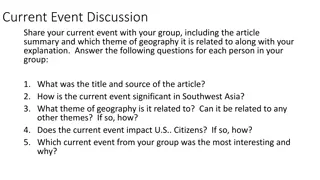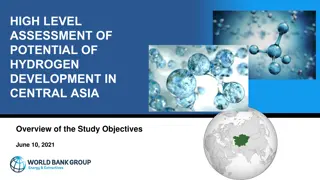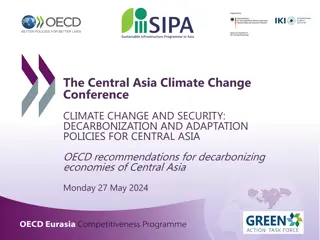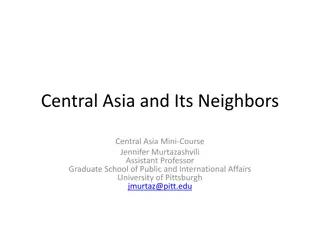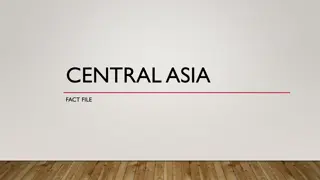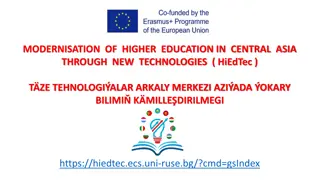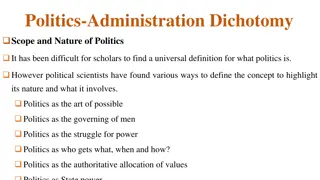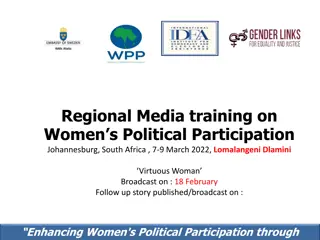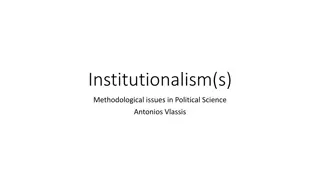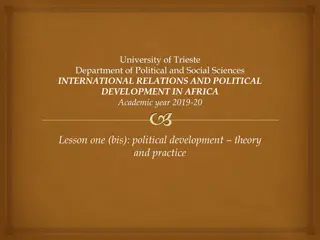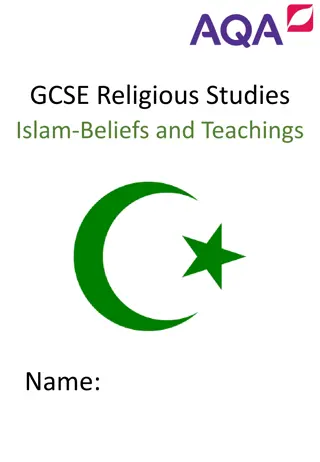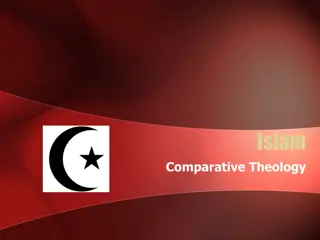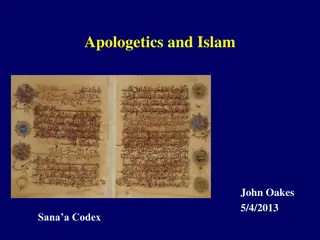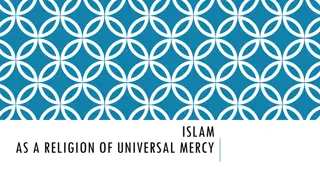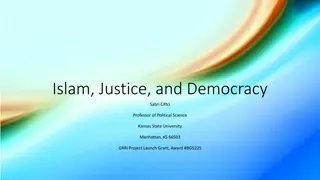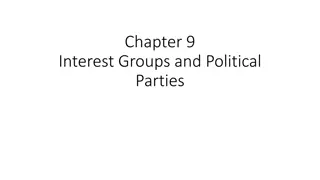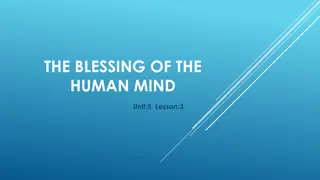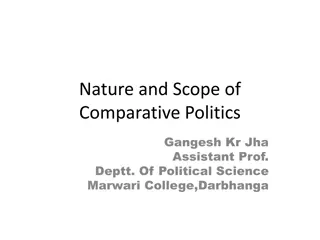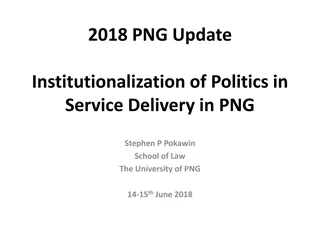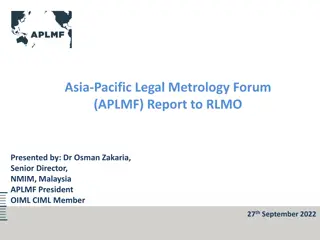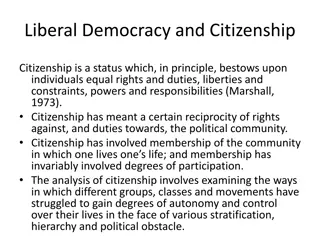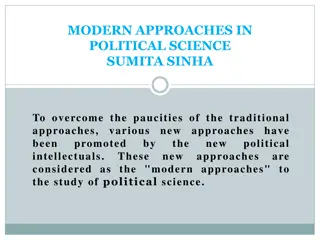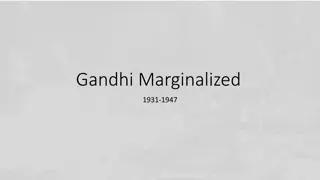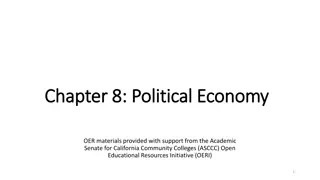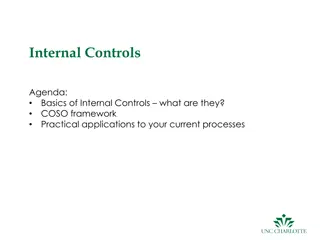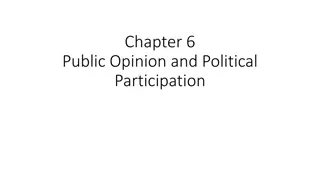Political Islam and Internal Politics in Central Asia: Insightful Analysis by Dr. John Heathershaw
Dr. John Heathershaw from the University of Exeter, UK, presented on Political Islam and internal politics in Central Asia at the University of Pittsburgh in 2014. The presentation explores topics like Islamic-Secular dialogue, post-Soviet Muslim radicalization, and common claims about Political Islam in Central Asia. It delves into themes such as the post-Soviet Islamic revival, the connection between Islamization and radicalization, the impact of authoritarianism and poverty on radicalism, and more.
Download Presentation

Please find below an Image/Link to download the presentation.
The content on the website is provided AS IS for your information and personal use only. It may not be sold, licensed, or shared on other websites without obtaining consent from the author. Download presentation by click this link. If you encounter any issues during the download, it is possible that the publisher has removed the file from their server.
E N D
Presentation Transcript
Political Islam and internal politics in Central Asia Dr John Heathershaw, University of Exeter, UK A presentation at the University of Pittsburgh 22 March, 2014
Islamic-Secular dialogue? Or national Islamic secularism?
Political Islam, Islamism, etc.. Some terminology: Political Islam Islamism Radical Islam Islamic violent extremist organizations
Part One: Post-Soviet Muslim radicalization Myth or reality?
Six claims about Political Islam in Central Asia 1. The post-Soviet Islamic Revival 2. To Islamize is to radicalize 3. Authoritarianism and poverty cause radicalism 4. Underground Muslim groups are radical 5. Underground Muslim groups are globally networked 6. Political Islam opposes the secular state
1. The post-Soviet Islamic Revival International Crisis Group: many have responded to 70 years of atheism by embracing religion (2009, pp. i) One survey: 43 percent pray more than they did prior to independence? BUT . Revival began from the 1950s as secularised Islam Political Islam at least from the 1970s
2. To Islamize is to radicalize ICG: the growth of interest in more strictly observant, and sometimes radical, Islam (2012, p.12) BUT This slippage is political, e.g. Akromiya Survey: of those who claim religion influences their behavior a lot , 30 percent either never pray or pray only on special occasions
3. Authoritarianism and poverty cause radicalism The following claimed as causes of radicalism: disappearance of basic services poor living conditions, corruption and abuse of office economic crisis and rigged elections declining demand for labour migrants woeful social and economic conditions a venal and corrupt political elite BUT No evidence Kazakhstan not Kyrgyzstan? Turkmenistan and Uzbekistan: effective suppression
4. Underground Muslim groups are radical When groups are driven underground they radicalise ? BUT Again, little or no evidence Islamic Revival Party of Tajikistan?
5. Underground Muslim groups are globally networked ICG: Links between Islamic militants in Central Asia, Afghanistan and the former Soviet Union [ ] supplemented by an informal web of contacts at multiple levels across the internet. 20 Central Asianists amongst 759 Gtmo detainees listed by US DoD in 2006 BUT Islamic Movement of Uzbekistan: external? Hizb ut-Tahrir: local?
6. Political Islam opposes the secular state ICG: The term Islamist in this report is used to refer to political activists with an agenda of applying Islamic law, through peaceful democratic means, through missionary work, through non-violent advocacy or through violent jihad. BUT Islamic Revival Party of Tajikistan Survey: the majority (62%) of those who claim that religion influences behavior a lot also believe that religion should concern itself only with the spiritual
Post-Soviet Muslim radicalization? Myth or reality? Political violence: 11 casualties and 3 terror attacks in CA since 2001? A break from the past, or Central Asian Islamic secularism?
Part Two: Case study Tajikistan Rasht valley, Tajikistan
Tajikistan Rasht valley The main town is called Garm
Rasht and the Tajik civil war From 1950s: forced migrations to south from Garm region of Rasht valley 1950s-90s: emergence of Garmi identity and land conflicts in South From 1992: civil war between regional factions including Garmis allied to the military formation of the Islamic Revival Party of Tajikistan From 1993: Garmi groups, having been forced into Afghanistan, return to the Rasht valley to continue the war 1996: Garm Protocol signed 27 June 1997: General Peace Agreement involving incorporation of Garmi commanders into state
Post-war conflicts 1997-2007: gradual exclusion of Garmi commanders by firing, exile, imprisonment and/or murder Various incidents of violence in Rasht valley related to these political struggles 2008: killing of Dushanbe commander Oleg Zakarchenko by the men of Garmi commander Mirzokhuja Ahmadov 2009: killing of former Minister Mirzo Ziyoev
Kamarob Gorge, 2010-11 Early-September 2010: prison break 15 September: high-level delegation in Rasht Valley region to meet ex- commanders 19 September: attack on convoy in Kamarob gorge of Rasht Valley 25 government soldiers killed Sept. 2010-Jan.2011: military operations over 100 killed including more than 60 government troops 4 Jan. 2011: announcement of the killing of the commander Ali Bedaki and his group
Whats it all about? Layers of the onion i. Islamic radicalism? Secondarily. Local (Ali Bedak) not regional (IMU) or global (al- Qaeda). ii. Post-war context? Continuation of a pattern; peripheral region; personal rivalries. iii. State weakness? Fighting within the state. All main protagonists have held government posts. iv. Business? Turf war over the Rasht valley route; control of coal mine?
Conclusions Political Islam is weak in Central Asia Non-violent Islamism is marginal and difficult to assess Radical Islam is a bogeyman deployed casually by secular states (and occasionally foreign experts) Islamic violent extremist organizations have largely been excluded from Central Asia Rather than a crime-terror nexus it is better to think of a crime-state nexus
Prompt Why is Political Islam weak in Tajikistan? Why is it so often conflated and exaggerated?
